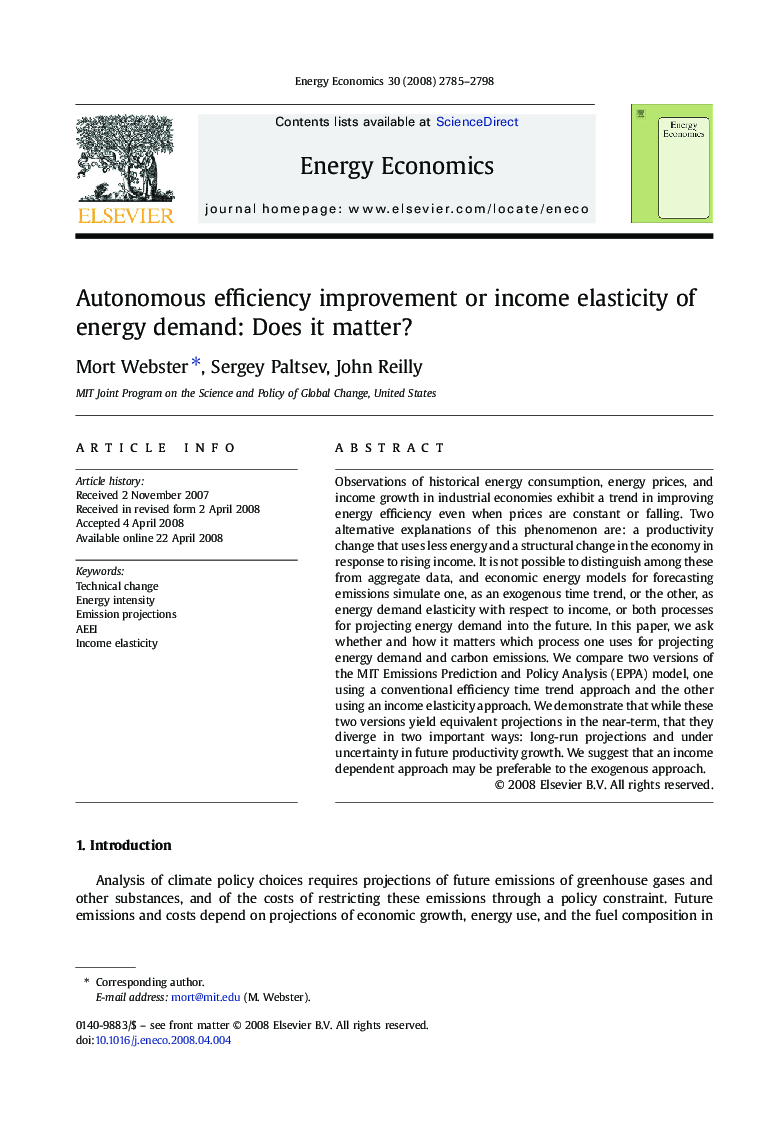| کد مقاله | کد نشریه | سال انتشار | مقاله انگلیسی | نسخه تمام متن |
|---|---|---|---|---|
| 5065858 | 1476729 | 2008 | 14 صفحه PDF | دانلود رایگان |

Observations of historical energy consumption, energy prices, and income growth in industrial economies exhibit a trend in improving energy efficiency even when prices are constant or falling. Two alternative explanations of this phenomenon are: a productivity change that uses less energy and a structural change in the economy in response to rising income. It is not possible to distinguish among these from aggregate data, and economic energy models for forecasting emissions simulate one, as an exogenous time trend, or the other, as energy demand elasticity with respect to income, or both processes for projecting energy demand into the future. In this paper, we ask whether and how it matters which process one uses for projecting energy demand and carbon emissions. We compare two versions of the MIT Emissions Prediction and Policy Analysis (EPPA) model, one using a conventional efficiency time trend approach and the other using an income elasticity approach. We demonstrate that while these two versions yield equivalent projections in the near-term, that they diverge in two important ways: long-run projections and under uncertainty in future productivity growth. We suggest that an income dependent approach may be preferable to the exogenous approach.
Journal: Energy Economics - Volume 30, Issue 6, November 2008, Pages 2785-2798